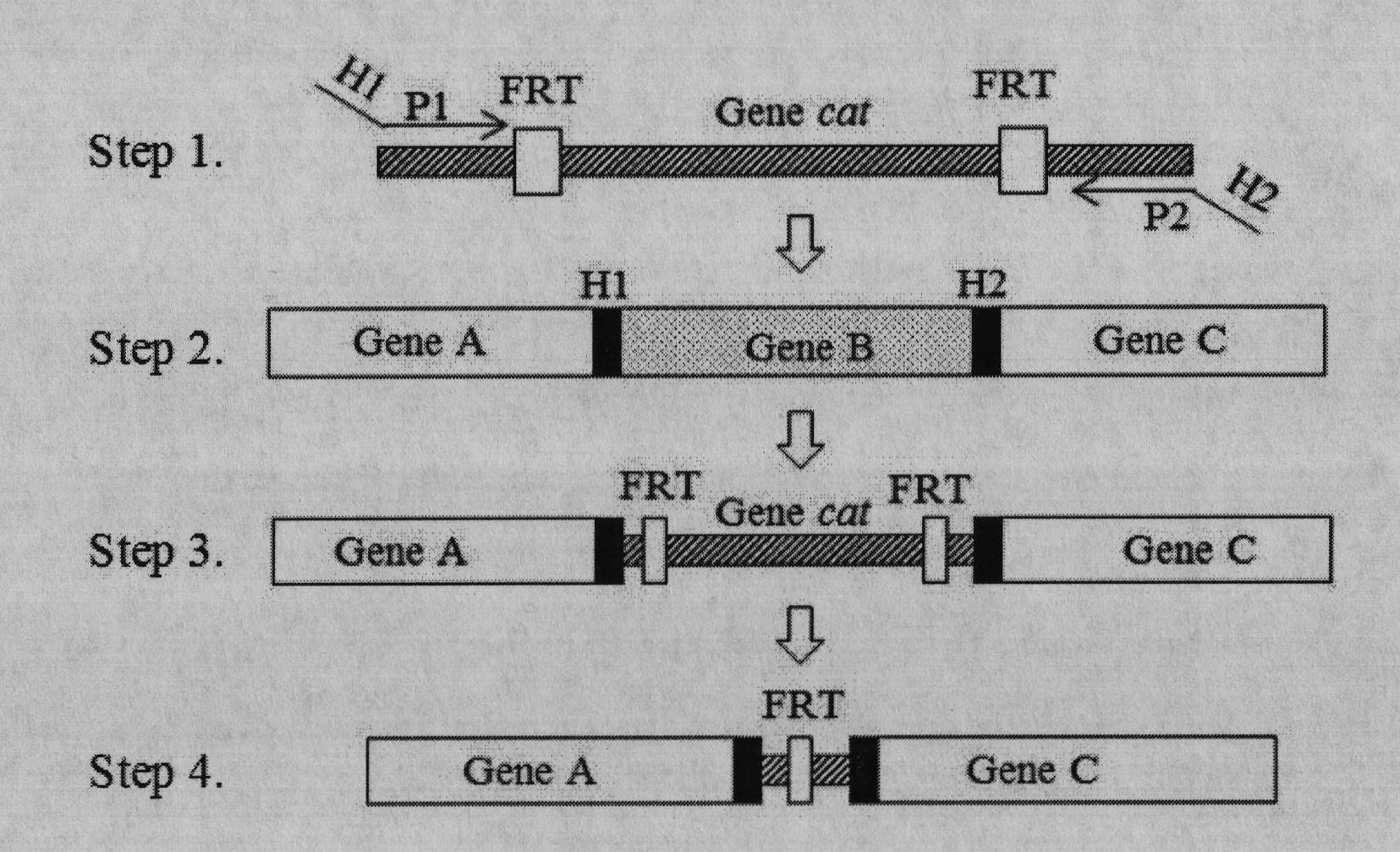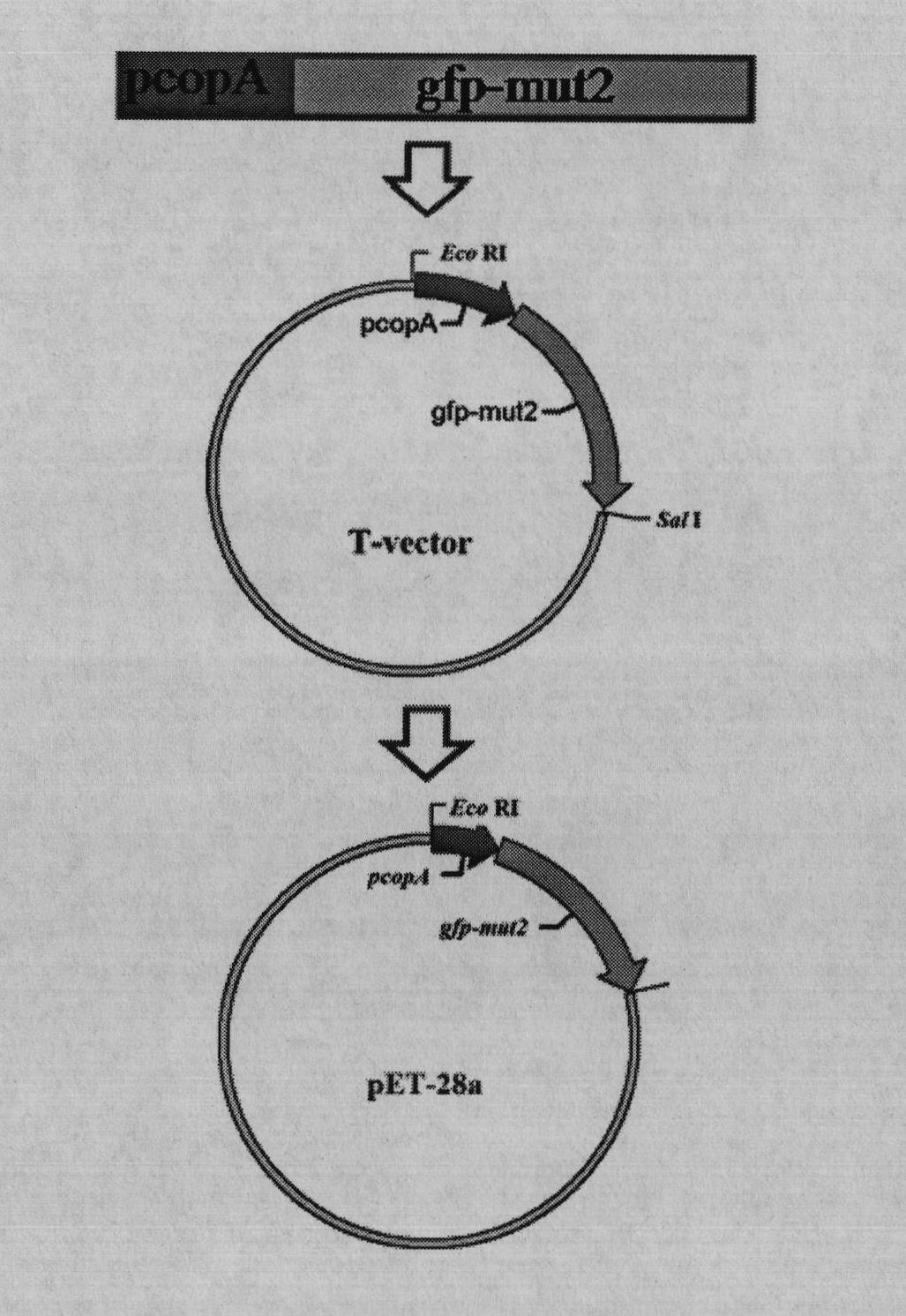Preparation method of biosensor with high sensitivity to heavy metal copper and product obtained thereby
A biosensor and highly sensitive technology, applied in the direction of recombinant DNA technology, the use of vectors to introduce foreign genetic material, DNA / RNA fragments, etc., can solve the problems of low sensitivity and cumbersome operation of biological detection methods, and achieve high sensitivity and high Quantum yield, easily detectable effects
- Summary
- Abstract
- Description
- Claims
- Application Information
AI Technical Summary
Problems solved by technology
Method used
Image
Examples
Embodiment Construction
[0058] The specific method for the construction of Escherichia coli highly sensitive to copper ions of the present invention is as follows:
[0059] I. Preparation of mutant bacteria
[0060] (1) Primer information and synthesis
[0061] Gene knockout primers: According to the gene knockout primer sequence provided by http: / / ecogene.org / , Primer5.0 and DNAMAN software, design homologous recombination primers (see Table 1), the 5' end is 50bp on both sides of the cat gene The homology arm (the part with single underline in Table 1), the 20bp at the 3' end is used to amplify the chloramphenicol resistance gene (the part with double underline in Table 1). The upstream homology arm primer H1-P1; the downstream homology arm primer H2-P2.
[0062] Gene knockout identification primers: use the Harvard Molecular Technology Group & Lipper Center for Computational Genetics website http: / / arep.med.harvard.edu / labgc / adnan / projects / EcoliKO-primers / EcoliKOprimers.htm to provide a pair of ...
PUM
 Login to View More
Login to View More Abstract
Description
Claims
Application Information
 Login to View More
Login to View More - R&D
- Intellectual Property
- Life Sciences
- Materials
- Tech Scout
- Unparalleled Data Quality
- Higher Quality Content
- 60% Fewer Hallucinations
Browse by: Latest US Patents, China's latest patents, Technical Efficacy Thesaurus, Application Domain, Technology Topic, Popular Technical Reports.
© 2025 PatSnap. All rights reserved.Legal|Privacy policy|Modern Slavery Act Transparency Statement|Sitemap|About US| Contact US: help@patsnap.com



